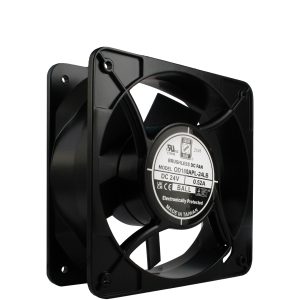keep a cool head when sourcing fans

Fan technologies enable electronics to perform at peak specifications. Unfortunately, thermal management is often a design afterthought, which can create problems when sourcing, selecting and implementing an effective cooling solution.
To extend the operating life of vital electronics, a fan should provide appropriate thermal management. Purchasers may need to consider application demands, from reduced size and energy consumption to increased CFM and harsh environmental ratings, but in addition to performance considerations, they should also be aware of any end-of-life or obsolescence issues. Product availability is a primary consideration, not only for the duration of the manufacturing cycle, but also for any long term maintenance obligations.
Assess Lifecycles
End-of-life is a critical event that can affect many things including: continuity of manufacturing, quality, cost management, in-field maintenance and customer support. Although every product has a lifecycle, today’s components and devices often have shorter life cycles to make way for next-generation parts. OEMs therefore need to plan strategically for EOL, in order to keep their manufacturing lines up and running. Many OEMs are making it a priority to engage with original component manufacturers that have a no obsolescence policy that guarentees longterm availability of the device. When you do engage with a company that discontinues parts, check the product lifecycle status. If the part is going to reach its end-of-life before the end of your manufacturing cycle, consider looking for an alternative part
Control Inventory
Minimum order quantities can help protect OCMs, but are often a deterrent for buyers. Standard fans are usually available in any quantity from an authorized distributor, but non-stock items may carry MOQs, which can impact inventory costs as buyers are forced to purchase a higher quantity than immediately needed. Finding a fan supplier that offers lower minimum order quantities helps keep inventory levels under control.
Check Environmental Restrictions
Any fan selection process should take environmental considerations into account. Harsh environment AC and DC fans and accessories are designed and tested to perform in tough conditions and protect against dust, moisture, salt fog, salt spray, temperature changes and humidity. Cooling fans exposed to excessive amounts of heat and dirt fail at a greater rate than those operating in normal conditions because dirty air filters damage the fan motor by blocking airflow, causing internal motor temperature to rise. Buyers should look for kits that include replacement filters, media and guards to minimize the number of inventoried part numbers.
Specify Operating Life
Finally, it is important to know how long a product will be expected to operate in the field in order to select a fan with an equivalent or longer operating life. Cooling fans are more susceptible to failure than any other component because the motors are under stress due to constant operation. Fan motors containing ball bearings are often more efficient and last longer than ordinary sleeve bearings, which can suffer loss of lubrication. Generally, larger, slower turning fans last longer than smaller, high-speed types, but usually fan failure is a gradual process, not an abrupt one, with reduced airflow increasing the chance of sensitive and costly components overheating.
As these issues reveal, cooling solutions should be a tier-one consideration when designing equipment. Fans should be selected according to performance and environmental requirements, but also with availability in mind
